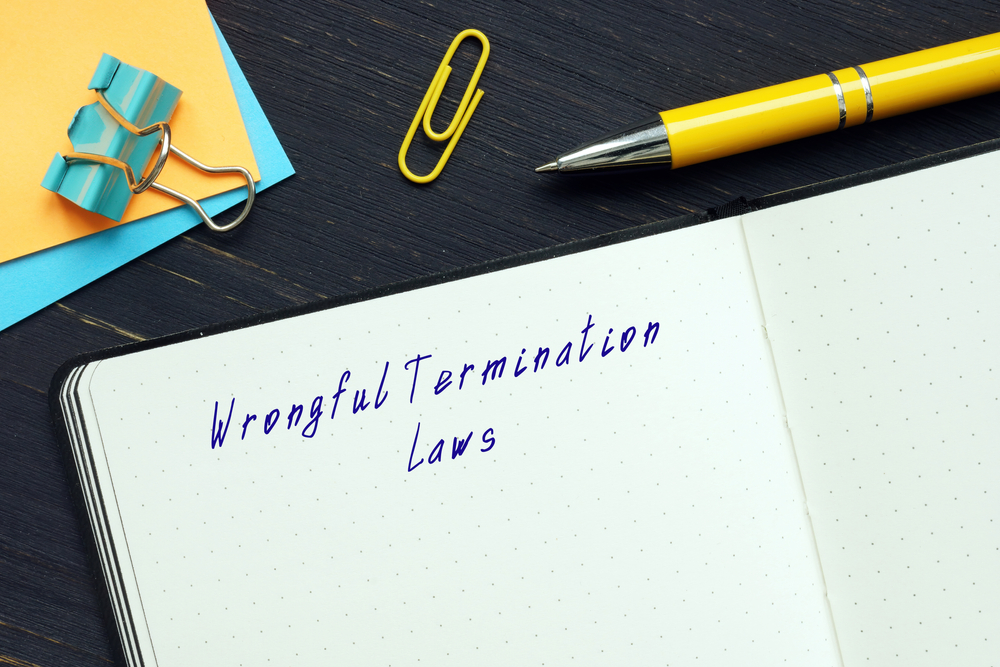Losing your job is tough, but being wrongfully terminated—fired illegally for discriminatory, retaliatory, or other prohibited reasons—is even worse. New York City employees have powerful protections under federal, state, and local laws. If you believe you were unlawfully fired, it’s critical to act quickly and methodically. Here’s a step-by-step guide to filing a wrongful termination claim in NYC.
Step 1: Understand What Qualifies as Wrongful Termination
New York follows the employment-at-will doctrine, meaning employers can fire employees for almost any reason—or no reason at all. However, certain reasons for termination are illegal.
Examples of wrongful termination:
- Discrimination:
Fired because of race, color, religion, sex, national origin, disability, age, sexual orientation, gender identity, or marital status. - Retaliation:
Fired for reporting harassment, filing a workers’ comp claim, requesting FMLA leave, or whistleblowing illegal practices. - Violation of Employment Contracts:
Fired in breach of a written employment agreement. - Protected Activities:
Fired for engaging in protected union activities or political activities outside of work.
Understanding whether your firing was unlawful is the first critical step in building your case.
Step 2: Gather Evidence
Strong evidence makes or breaks wrongful termination claims. Start collecting documentation immediately.
What to gather:
- Employment Documents:
- Offer letter
- Employment contract (if any)
- Employee handbook (showing company policies)
- Termination Documents:
- Termination letter
- Performance reviews (especially if they were positive)
- Written reasons for firing (emails, texts, HR reports)
- Discrimination or Retaliation Evidence:
- Emails, texts, or notes showing biased remarks or retaliation.
- Records of complaints you made (e.g., HR complaints, EEOC filings).
- Witnesses:
- Coworkers who observed discrimination, harassment, or retaliation.
Organizing and preserving evidence ensures you’re ready when it’s time to file your complaint or lawsuit.
Step 3: File an Internal Complaint (Optional but Helpful)
Before taking external legal action, consider filing a formal internal complaint with your employer’s Human Resources (HR) department.
Benefits of filing internally:
- Gives the employer a chance to correct the issue.
- Shows you tried to resolve the matter professionally.
- Helps build a stronger case if you later file with government agencies or in court.
How to file internally:
- Draft a clear, concise letter explaining:
- Why you believe the termination was wrongful.
- Any evidence you have.
- What remedy you are seeking (e.g., reinstatement, back pay).
- Submit it to HR or management and keep a copy.
If your employer does not respond satisfactorily—or retaliates further—you’re ready to escalate the matter.
Step 4: File a Complaint with the Appropriate Agency
In NYC, several government agencies investigate wrongful termination claims based on discrimination, retaliation, or harassment.
Where to file:
- Equal Employment Opportunity Commission (EEOC):
Handles federal claims (e.g., Title VII discrimination, ADA violations).
Website: www.eeoc.gov - New York State Division of Human Rights (NYSDHR):
Investigates violations of New York State human rights laws.
Website: dhr.ny.gov - New York City Commission on Human Rights (NYCCHR):
Investigates violations of NYC-specific laws like protections based on gender identity, caregiver status, and criminal history.
Website: www.nyc.gov/humanrights
How to file:
- Complete an intake form online or by visiting the agency in person.
- Include:
- Details about your employment.
- How and when you were terminated.
- Evidence showing illegal motives.
Investigation Process:
- The agency will assign an investigator.
- They may interview you and your employer.
- They can arrange settlement discussions or bring the case to a hearing.
Tip: Filing with the EEOC may be required before you can file a federal lawsuit for discrimination under Title VII, ADA, or ADEA.
Step 5: Consider Filing a Private Lawsuit
Instead of—or after—filing with an agency, you may file a private lawsuit in state or federal court.
When to consider suing:
- If the agency does not resolve the issue.
- If you want to seek higher damages (like emotional distress compensation or punitive damages).
How to file a lawsuit:
- Hire an employment lawyer experienced in wrongful termination cases.
- File a complaint in the appropriate court (e.g., New York State Supreme Court, U.S. District Court for the Southern or Eastern District of New York).
What you can sue for:
- Lost wages and benefits.
- Reinstatement to your old job.
- Compensation for emotional distress.
- Punitive damages (for egregious behavior).
- Attorneys’ fees and court costs.
Many wrongful termination cases settle before trial, but being prepared to go to court strengthens your negotiating position.
Step 6: Know Your Deadlines
Timing is critical in wrongful termination cases.
- EEOC Complaints:
You must file within 300 days of the discriminatory or retaliatory act. - NY State Division of Human Rights Complaint:
Must be filed within one year of the termination. - NYC Commission on Human Rights Complaint:
Must be filed within one year (discrimination) or three years (harassment). - Private Lawsuit Deadlines:
Generally, lawsuits must be filed within three years under New York State Law.
Federal lawsuits may have slightly different deadlines depending on the law invoked.
Missing a deadline could permanently bar your case, so act promptly!
Conclusion
Being wrongfully terminated in New York City can feel devastating, but you are not powerless. By understanding your rights, documenting your case carefully, filing complaints promptly, and seeking legal advice if necessary, you can fight back. Justice is within reach for workers willing to stand up for themselves.
Click Here to Schedule a Consultation with Figeroux & Associates Today!



